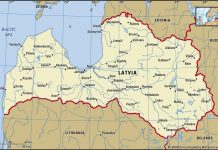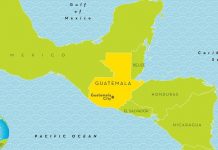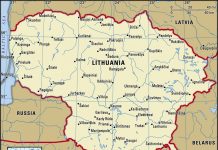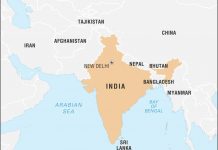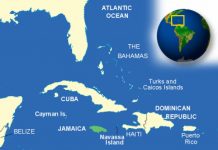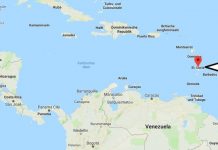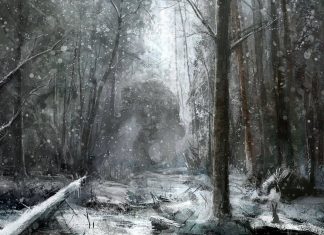Republic of Kazakhstan
Capital: Astana (moved from Alma-Ata in November 1997, was known as Akmola until June 1998)
Area: 2,717,300 sq. km /1,049,155 sq. miles
Population: 17,027,000
Population density per sq. km /sq. mile: 6/16
Ethnic composition
45% of the population are Kazakhs, 36% are Russians, 6% are Germans, 5% are Ukrainians, 2% are Uzbeks, 2% are Tatars. All nationalities are guaranteed equal rights under the Constitution, but in the eastern part of Kazakhstan, in the Jamb, tension is increasing between Kazakhs and the Russian-speaking population, as a result, a forum was convened and the Assembly of Nationalities of Kazakhstan was created. In the northern part of Kazakhstan, Russians make up the majority of the population, and separatist sentiments are growing there. Since 1989 Kazakh, belonging to the Turkic group, has become the official language of the country, but Russian is also used as the language of interethnic communication.
Religion
Kazakhs converted to Islam in the 19th century, and Sunni Muslims predominate. Many new mosques have been opened since 1985. Russian Russians are adherents of the Russian Orthodox Church. Protestant faith is also widespread, especially Baptism, and there are communities of Roman Catholics. The Republic is a secular State, and religious discrimination is prohibited by the Constitution.
History
Kazakhs are descendants of Mongol-Turkic tribal groups that settled in this region during the early Christian era. In the XV – XVII centuries . they founded their own tribal state, the Kazakh Horde, but then it split into several parts due to the fact that the tribes were constantly nomadic; these parts were called senior, middle and junior zhuzes, led by khans. The Zhuzes, being under threat of a military attack from the Mongols, turned to the Russian tsar for protection in the XVIII century. In 1822-1848 . Russian Russian state control became stronger, the khans were gradually overthrown, and at the end of the XIX century. a lot of Russian and Ukrainian peasants moved to this region.
All this led to indignation and indignation on the part of the Kazakhs, in 1916 they raised an uprising, during which 150,000 Russians were killed. The 1917 revolution in Russia led to the outbreak of civil war in Kazakhstan, in 1920 it joined the USSR as an autonomous republic, and in 1936 it became a union republic.
In the early 1930s, more than a million people died in Kazakhstan due to hunger and repression associated with the Soviet program of collectivization of agriculture. In the early 1940s, by order of Soviet dictator Joseph Stalin, a huge number of Germans were deported from the Volga region to the Republic of Kazakhstan.
In the 1950s, a program to expand agriculture began in northern Kazakhstan. It was held under the leadership of Soviet leader Nikita Khrushchev, who believed that it was necessary to make the most of the virgin lands of Kazakhstan. But it only led to the depletion of land, to small hurricanes in the early 1960s and the drying up of the Aral Sea, as well as to a large influx of Russian immigrants, whose number reached 20% of the total population in 1926, and now turned the Kazakhs into a national minority in their own republic. Nuclear weapons tests were conducted in East Kazakhstan. The foundation of new industrial enterprises and the Baikonur cosmodrome in Leninogorsk also led to the resettlement of Slavs to the republic.
In August 1996, an agreement was signed with Kyrgyzstan and Uzbekistan to create a single Central Asian economic region by 1998, and during 1997 and 1998, major contracts were signed with European oil companies for the right to operate, as well as with China for the construction of an oil pipeline to a province in Western China. This indicated a decrease in Russia’s influence on the former Soviet Republic. Experts in the oil industry have estimated that in southwestern Kazakhstan, near the Caspian Sea, oil reserves amount to 200 billion barrels, i.e. 2 times more than in Kuwait.



















